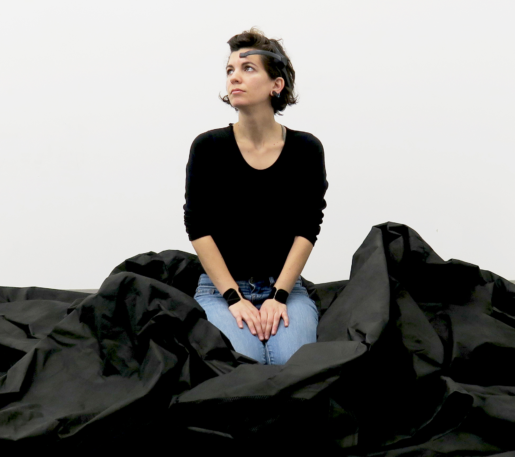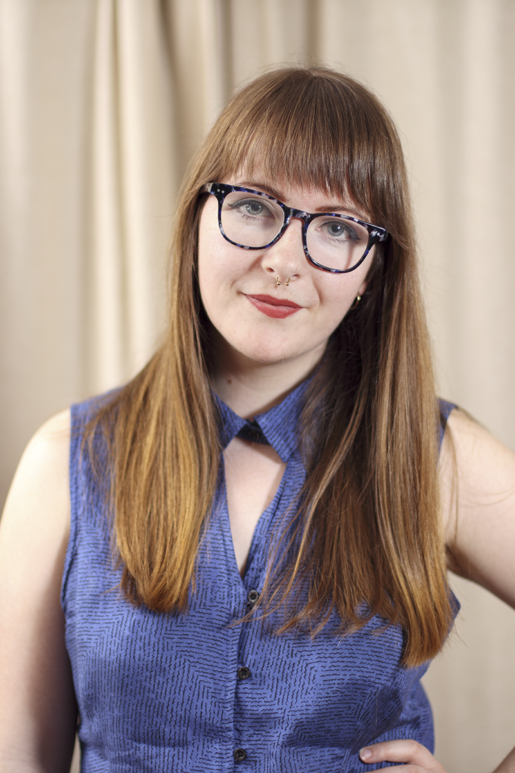Student Profile | Joshua Singler
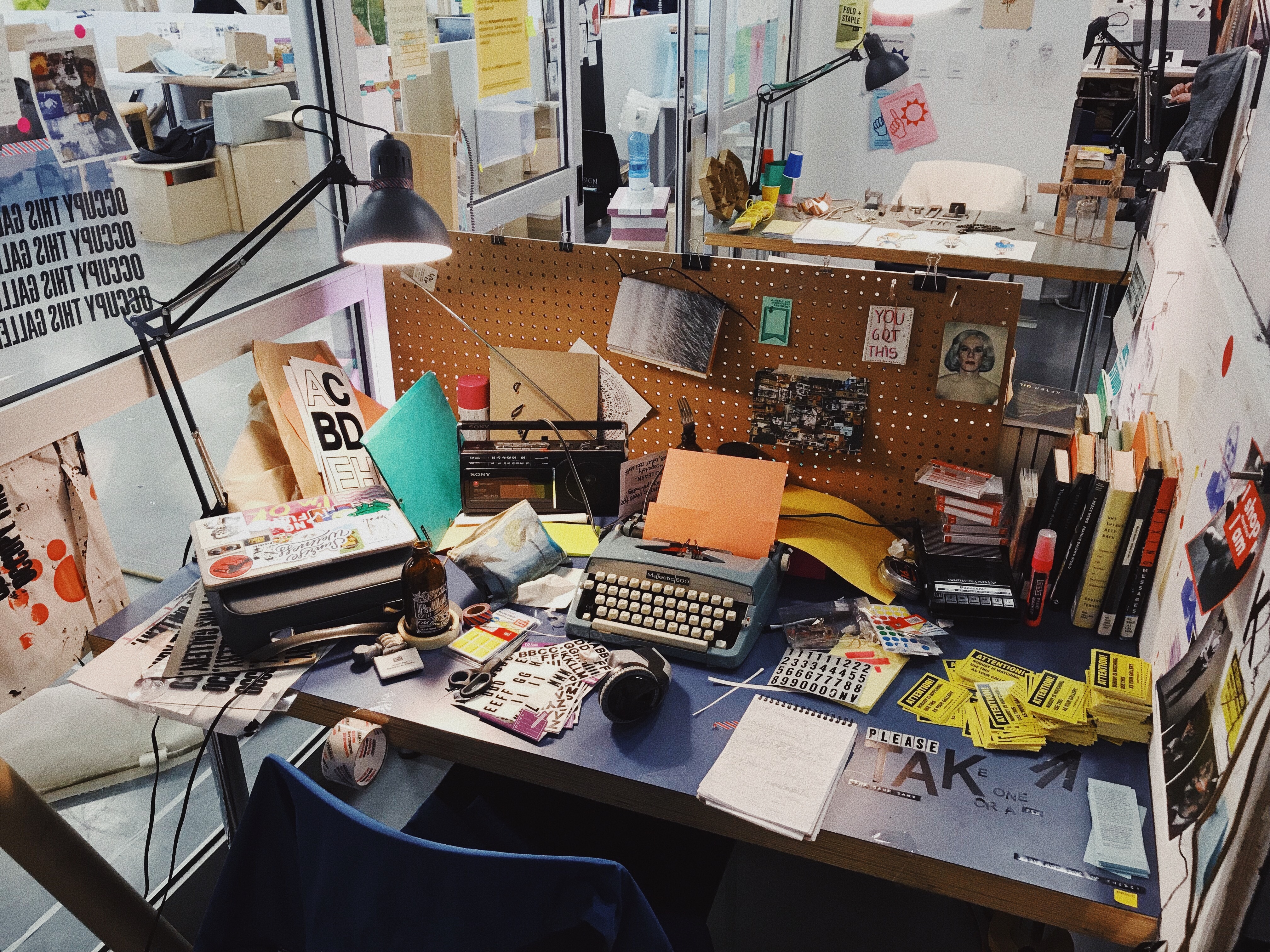
Posted on | Updated
The MDes student and 2019 DESIS scholar shares his work and practice.
First year MDes student Joshua Singler was recently selected as the 2019 DESIS Scholar. The Scholarship is awarded to a graduate student who develops research in line with the theories and objectives of the DESIS Lab at Emily Carr University, and plays a supportive role in DESIS events throughout the year.
Joshua told us about his research, his work with DESIS, and his experience at Emily Carr so far.
What is the focus of your Master's of Design work?
It’s in a constant state of flux, however, at the core of my research is a deep analysis and reflection of the primarily unconscious, habitual routine of everyday life and the possibility to use design as an intervention.
Three constant lenses I’ve been analyzing my work through are patterns, rhythms and layers. By tapping into the habitual nature of everyday life I have been documenting these patterns, rhythms, and layers and recording disruptions on a daily basis. I do this through a variety of methods–voice recordings, tape recorder, typewriter, handwriting, digital/film photography, textile, print, conversation, reading, etc.
I believe that an investigation of the everyday opens up an arena of potential and opportunity to challenge ways of thinking with, and living amongst one another. I’m convinced that design has the power to make us more mindful of actions and their consequences in a variety of technological and social frameworks.
What led you to apply to Emily Carr?
My undergrad, which was a joint program offered through York University and Sheridan College, was very problems-solution focused. I feel that it’s an unnatural way of producing design and puts a large amount of stress on the designer. A big frustration of mine is seeing how design has been turned into a factory. It’s the assumption that design has to always simplify or solve a problem, but what’s becoming more evident is that when we design and drop these “solutions” into context they essentially begin to cause more problems. A lot of design lacks empathy. A lot of design teaches us to call them “users” and not people, human beings.
I felt that coming to a university that was predominantly focused on the arts would give me more freedom to tap into something deeper than the surface level problems, to look closer at the world and how design can be integrated into our lives in differently. I think underneath it all, I wanted to find a community that would allow me a chance to explore a different side of my research and practice and that’s exactly what I’ve found at Emily Carr.
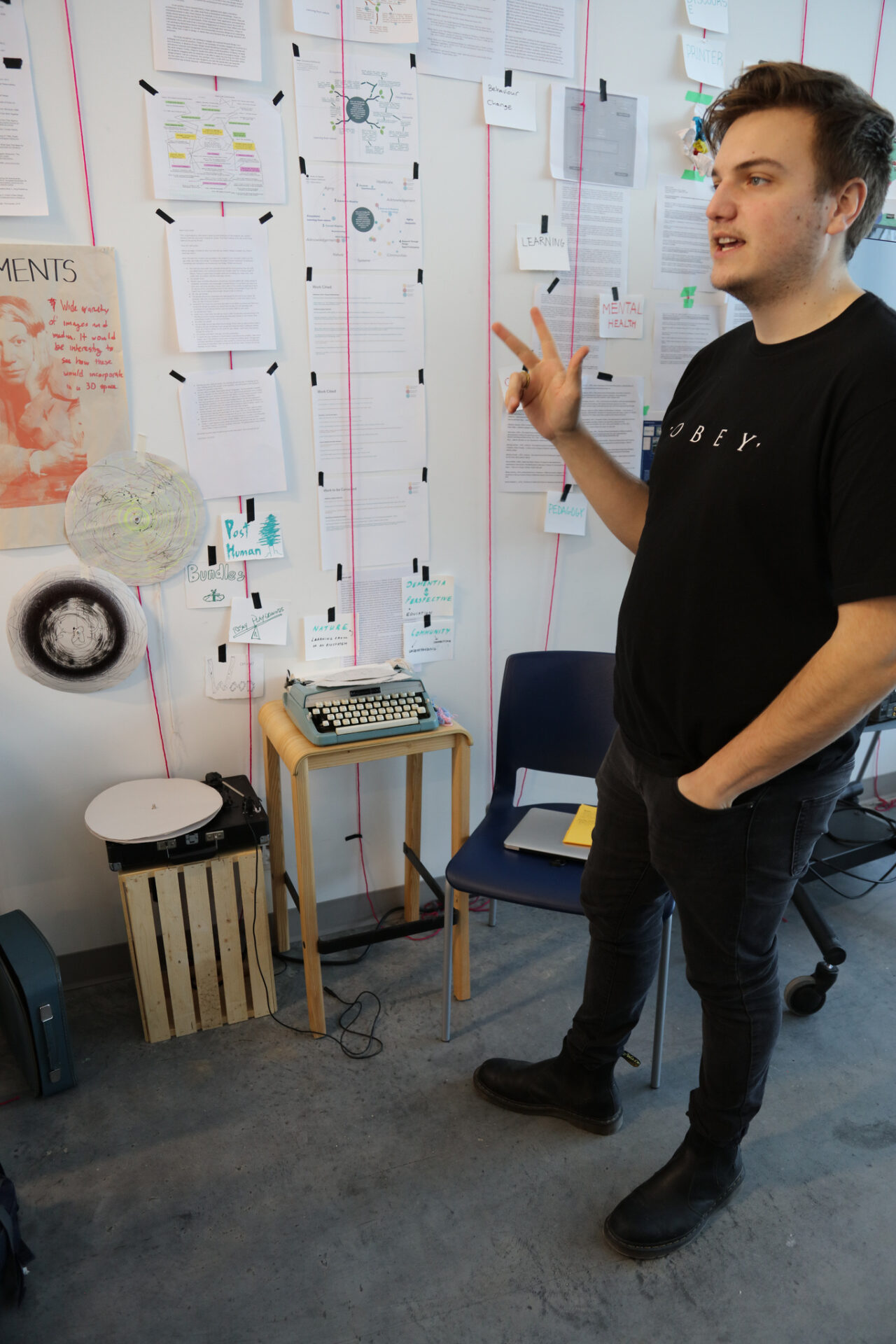
What does the DESIS Lab do at Emily Carr?
The Emily Carr DESIS Lab (Design for Social Innovation towards Sustainability) is part of a larger worldwide network that is constantly engaging in projects that act as an inquiry into social engagement and ecological sustainability. We define the social context as inclusive of all beings: the marginalized, the privileged, and other-than-humans.
One of the projects that I’ve been working closely with is called A Handful of Stories (AHOS), a project that is trying to rethink or unthink refugee stories. We had an event in November that brought Treana Peake from the Obakki Foundation to share six different stories from refugees in different formats, and several of us were there documenting the stories in different mediums (drawing, photographing, writing). After, we made a printed collection of stories from the stories were told, and passed them to an undergrad class, who are making textiles from that collection. The project is looking at how stories are passed through these different trails, which can further the empathy for the people in these stories when they’re not directly involving us.
So not all projects are explicitly focused on sustainability?
All of the DESIS projects are sustainability focused, but some more directly than others. Storytelling, like in the Obakki project, is seen as foundational to DESIS practices because storytelling is how communities create shared understanding. Other projects appear more directly about sustainability, like the Single Use Plastics Research project that investigates how disposable plastics have shifted cultural behaviours within communities; we are researching how to change that reliance on disposability.
My own research in particular has been looking at social structures and habits in hopes of creating dialogue around, and encouraging more conscious behaviours as we relate to one another and to the world around us. Our daily habitual routines hold consequences and I’m looking at how design can help in finding a sustainable social environment where all walks of life can live more consciously. This level and care for consciousness and awareness can then lead to care. Care for self, others, the Earth, and its inhabitants. Wendell Berry would call this "husbandry".
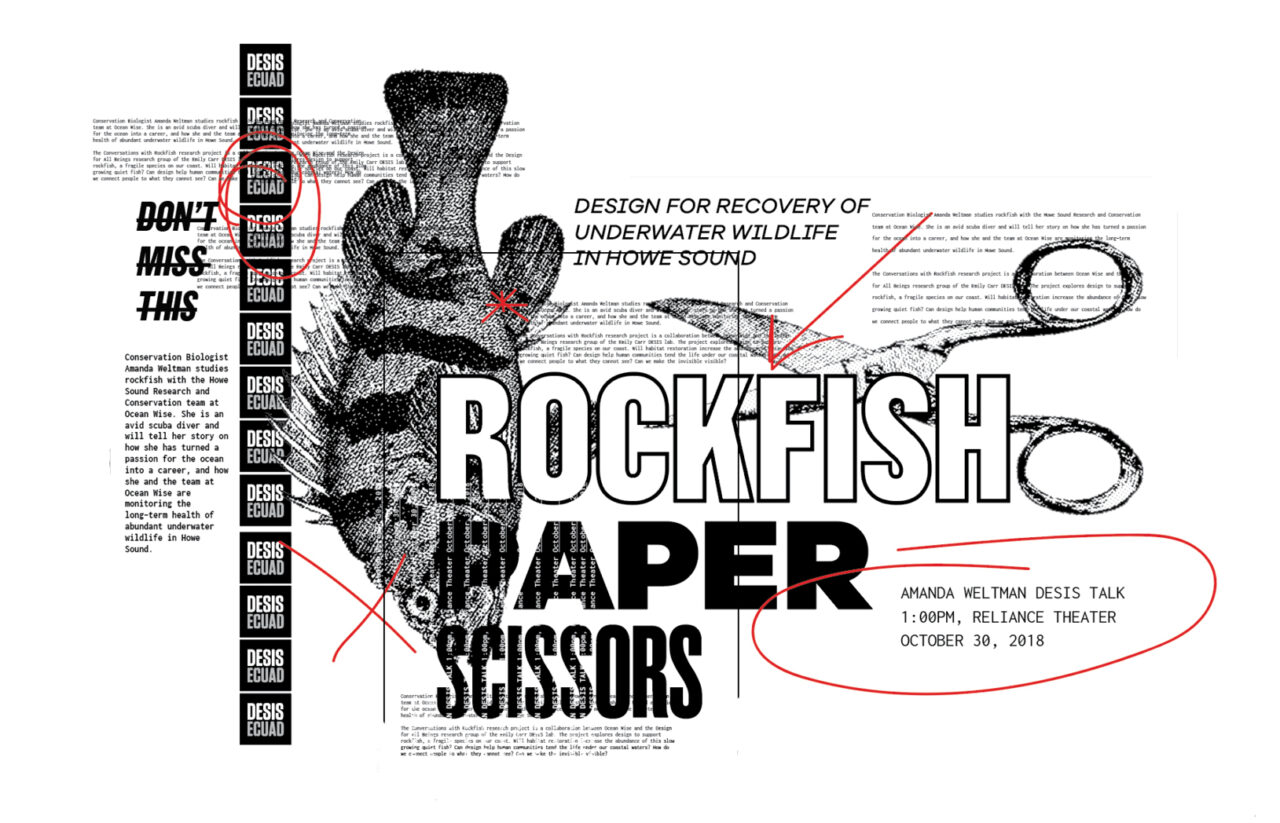
How are you finding your Master of Design program?
It’s not at all what I expected—but I mean that in a good way. The first semester we spent a lot of time working on leaving what assumptions we might have had about a Master’s program at the door. We spent a lot of time experimenting, doing things outside our practice and outside of our comfort zone, trying methods that we hadn’t touched on before. At first it was frustrating but I found it also generated a lot of inward thinking about what we wanted to do with our research. The first semester forced us to really reflect on what we’d been doing as designers, which up until this program I never really stopped and had a chance to. That came with a lot of little realizations and parallels and set us up nicely for the second semester.
Now we’ve been applying those realizations and putting this reflective way of thinking into practice. I’ve started to get some momentum going with my projects and research endeavours. In the summer, we don’t have classes but we have meetings with our advisor throughout. I believe it’s expected that we will doing the bulk of the research-gathering throughout the summer for our final thesis.
Do you have a thesis project in mind?
It’s always kind of been intrinsic to go with a publication or a book, just because I’m often able to articulate my thoughts best in writing or taking pictures. I’ve been doing a lot of writing on my blog, in notebooks, on my typewriter, so it would be nice to see it come together in some sort of publication or public exhibit/installation at the end of my research, but it’s still early so I’m keeping my options open.
Bringing my research into the context of the public is an important place where I wish to push my research. There’s a lot of artists and designers that I am constantly looking to who have done this successfully. Like with street artists JR, Banksy, and also Candy Chang— she made the chalkboard “Before I Die” that’s placed in a community. Barbara Kruger is a designer that inspires me a lot too, amongst others, that bend and warp the ways that design can be integrated into our society. I’m excited to see the final form of my thesis project–but it’s hard to tell exactly how it will take form because of the broad range of artists, designers, filmmakers, philosophers that inspire and drive me to create.
Follow Joshua's research as it evolves on his website + Instagram.
